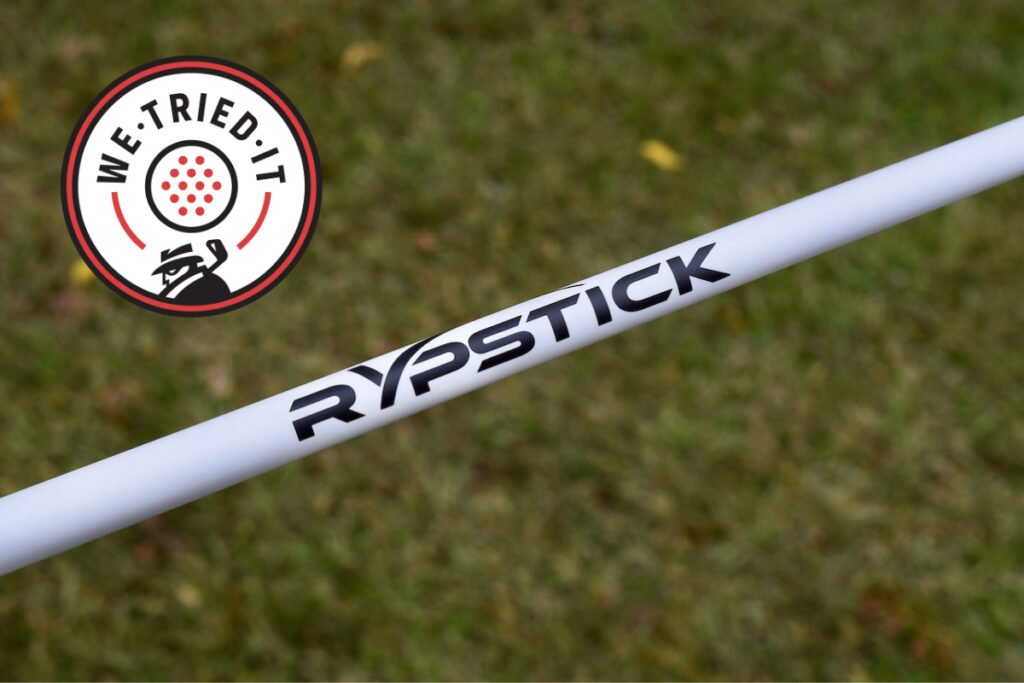There is a lot of cool gear in the golf equipment world that doesn’t always fit neatly into Most Wanted Tests or Buyer’s Guides. You still want to know how it performs. In our We Tried It series, we put gear to the test and let you know if it works as advertised.
What We Tried
Rypstick Speed Trainer
Who Tried It?
Dave Wolfe– MyGolfSpy writer and putter fanatic. I am always looking for ways to improve my game and fight off the impact of aging.
Can I Swing Faster?
Some would argue with me but I believe speed is everything in golf. Sure, control also helps but I find speed to be more important. If you disagree, you likely hit the ball a long way. Control is cool but it does not override distance. Being in the fairway is nice but being way back in the fairway is not that nice.
How would you feel about hitting driver, 3-wood on every par-4? I’ve lived in that space. It sucks.
Being in the fairway is no consolation when you know that hitting the green in regulation is beyond your capability.
Rypstick: Speed is Trainable
Before you rage in the comments section about how you are 80 years old and still driving the ball 300 yards, let me clarify. I am talking about my experience here. As I have aged, my clubhead speed has decreased. In my 40s, I was typically in the low 100-mph range with the driver. These days, I’m not sure I’m even cresting 90. I’m hitting almost every fairway but, as I mentioned, my approach shots now are with woods, not irons.
Resignation was how I viewed the situation. I figured I would just move to the combo tees, then to softer shafts in the clubs. Isn’t that what golfers are supposed to do as they age? Our Tony Covey has explained repeatedly how soft is slow with golf balls. Unfortunately, I am learning first-hand that old is slow as we age.
Then the Rypstick hit my mailbox along with its simple optimistic assertion: Speed is Trainable.
How Does the Rypstick Work?

Right when I’ve made peace with short-knocking, here comes Rypstick telling me that even as I crest 54 this month, I can swing faster. Admittedly, I was skeptical at best. Obviously, I’ve seen other speed trainers out there like The Stack and SuperSpeed but I’ve never worked with one. Truth be told, I’ve had a Stack in my garage for six months and never used it.
Why not? Probably skepticism and fear. I’m skeptical that I can learn to swing faster and I am afraid that trying to do so will cause injury. I’ve had back injuries. They are awful and I’ve caused them by swinging too hard.
Anyway, the Rypstick drifted into my possession and I decided to give it a try. Could I actually learn to swing faster or was I going to spend the winter rehabbing a pulled erector spinae?
Testing the Rypstick
Thus began my journey with the Rypstick. I sort of knew how speed training worked. Variable weights were involved. Really, I had no idea what the training program would look like. Tony wrote an overview of the Rypstick back in 2021 but I didn’t deep dive into the workings of the program back then so I was a bit clueless at the start.
Overall, the Rypstick instructions proved simple to follow and the unit was especially simple to operate. A small turn of the cover allows the weights to slide in and out. Not much to learn mechanically. On to the activity.
Thankfully, the Rypstick speed program includes instructional videos. That seemed a logical place to start. First on the training agenda, Rypstick says we begin with a warm-up.
Rypstick Warm-Up
The Rypstick site has a couple of warm-up videos to follow before training. The one above was my go-to. The pace is a little faster than mine but I found this to be effective and you can even do it in the course parking lot.
Since I live in a small house, I completed all the Rypstick Level One series outside in my backyard on a mat. Rypstick does make a shorter trainer for indoors but I knew that swinging this around inside would first result in breakage—and then divorce.
Yes, that means I was training outside in winter. Normally, that wouldn’t be a problem here in mild Northern California. This year, though, December and January decided to bring the torrents.
Ultimately, I was able to dodge the downpours and get the data.
Rypstick On The Range

Obviously, another place to do your training would be at the driving range. That way, you could hit balls before and after the session to keep your swing intact. One thing to be aware of is that the holes in the head of the Rypstick whistle through the impact zone. This is intentional. The whistle assists with timing through impact. I liked the whistle and found it useful. However, it may annoy adjacent range patrons.
Rypstick Level One Training Protocol
As the video shows, the Rypstick Level One protocol consists of three drills at three different weight settings. First, you swing from your knees. I’m right-handed but all drills are done in both right- and left-handed orientations. Three swings each way with zero weights the first time, then add a weight for each subsequent swing session. Swinging left-handed was quite awkward initially.
The second drill is standing, starting from the top. Basically, you set your swing at the top, with the lead heel lifted. Once set, you stomp the heel and swing. Once again, the protocol was three swings each direction with increasing weights for three sets total.
The third drill was full swing, adding a lift of the lead foot in the backswing. Stomp that foot and swing. For all drills, the RypRadar will let you know your speed.
Oh, I forgot to mention the other training rule. You swing as fast as you possibly can on all swings.
Quantifying Success With the Rypstick

Prior to the first session, I established my baseline driver speed by taking the average speed of five swings. For me, this was 93.6 mph. The fastest swing was 96, the slowest 92. Honestly, I could have stopped the whole program there and been happy. I thought that my swing was in the 80-mph range for sure. Maybe not all hope is lost.
After each training session, I assessed my progress by swinging the driver five more times. After Session 1, my average was 96.3 mph, ranging from 92 to 99 for the five swings. One session and I was up 3 mph. That seemed impossible, stunning and significant. Maybe there was something here?
Rypstick (and math) says that every mile per hour gained equates to three yards of distance. One training session and I was approaching 10 yards of gain? OK. For that, I will brave the elements.
Rypstick Level One Results

No, I did not continue to gain three miles per hour per session. In fact, for the next two sessions, my average was back to the baseline of 93.6. Sessions 4 and 5 saw the average speed jump to 97.6. I broke 100 in Session 4 and, by Session 6, I almost averaged 100 (99.2). After Session 6, things got interesting.
On the last swing of Session 7, I hit 108. It was like achieving the impossible. Prior to doing this, I have said it was more likely to have aliens bring me kittens than for me to swing 108. I don’t think I have ever swung my driver that fast.
My averages continued to climb during the subsequent sessions with the highest average speed of 105.2 coming in Session 11. Speed dipped a bit in the last session (103.8) but it was especially cold and windy that day and I could tell I just wasn’t feeling it.
Did Rypstick affect my swing?

So, I got faster, like 11.6 mph faster. In terms of pure swing speed, I’d say that gaining nearly 12 mph in a month definitively shows the Rypstick can help you swing faster.
Did that equate to 33 yards farther off the tee? Not yet. Honestly, I’d label my swing as “transitional” right now. It’s in flux but I’m optimistic. With the winter weather, I’ve only played a couple times since starting the program. Preliminary results are positive though as I’ve had a few tee shots that are deep, reaching previously unexplored areas of the course. Unfortunately, I’ve also had a good modicum of chaos from the tee. Range session reps are showing me that I can be faster and accurate. Optimism is dangerous in golf but I’m hopeful about the coming year on the course.
Bottom line: Using the Rypstick increased my swing speed. It works. So am I going to move onto Level Two? Once it warms up, you bet. I will probably do Level One again and then move up. Now I am curious to see if the 105-mph mark is a plateau for me. If it is, I’ll happily live out my days swinging at 105. Still, after what I gained in Level One, I’m curious to see if Level 2 can help me hit 110.

If you are still on the fence about trying it for yourself, here are two other things to think about.
- First, there is a new Rypstick app coming in March to assist with your training sessions.
- Second, you can use the Mygolfspy exclusive code MGS10 to get 10% OFF.
Find out more about the Rypstick at Rypstick.com.
*We may earn a commission when you buy through links on our site.



